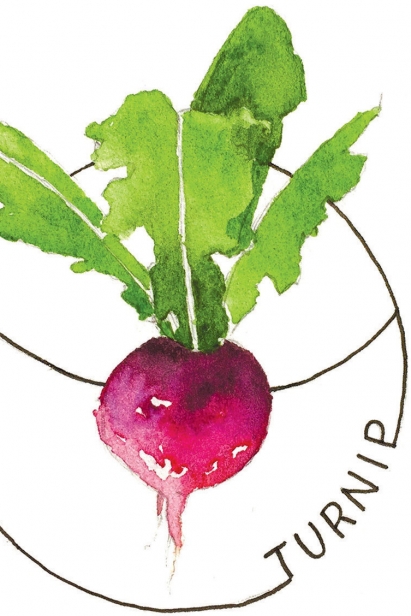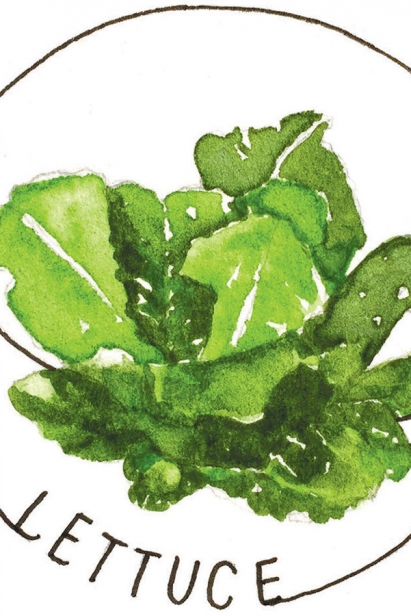Farming For Food Safety
With food production operating under global proportions for several decades now, we Americans readily recognize that tonight’s dinner has most likely taken a “tour de world” before reaching our plates, though we may not always consciously reflect on it.
We are, however, very aware of other consequences resulting from the now-universal span of our supply chain, such as recent and more frequent cases of food poisoning and disease.
The increase in foodborne illnesses within the past decade (one in six Americans gets sick from contaminated food annually) has triggered sweeping concern about what safety measures are in place to protect consumers from bacteria-consumed foods. Consequently, the issue has launched a national investigation into the ways our food is produced and packaged in which the Food and Drug Administration (FDA) has spearheaded an all-encompassing comprehensive food safety plan to be integrated over a multi-year period.
New Regulations
The Food Safety Modernization Act (FSMA), passed in 2011, will shift the focus of federal regulation of food production to a more prevention-based approach and give the FDA new authority to regulate the way foods are grown, harvested and processed.
FSMA has been carried out through a series of policy amendments over the past five years, the most recent of which was finalized in 2014 with two new key rules addressing aspects of food safety throughout the various process and handling points in the growing and distribution chain.
What are now published as the Produce Safety and Preventive Controls Rules are the first federal science-based minimum standards for the safe growing, harvesting, packing and holding of fruits and vegetables.
With those minimum standards come somewhat stringent requirements for farms both big and small that require complete compliance under a common standard advocating one best federal practice for food safety. What remains to be seen is just how one best practice extended across entities of all shapes and sizes will unfold into the daily operations of some of our smaller and more vulnerable farms, and what impacts may arise.
Growing Pains of Standardization
While FSMA deals mainly with the safety practices of manufacturing and food processing facilities—excluding operations defined as “farms” from the rule—key requirements established under the Produce Safety Rule are soon expected to become operational norms for almost all farms across the country with compliance dates as early as January 2017 for some farms grossing more than $500,000 annually.
That is, the requirements will become operational norms to the extent to which all farms, down to the smallest, are properly informed and receive adequate education around what seems daunting in terms of extra paperwork, more frequent onsite inspection and increased risk of not meeting a strict regulatory checklist.
The requirements of the produce rule address potentially high access points for bacterial contamination within a farming operation, citing specific actions to be taken by each covered farm in order to mitigate risk and stay compliant within such categories as agricultural water, biological soil, sprouts, domesticated and wild animals, worker hygiene and equipment.
Some compliance categories involve rigorous testing and most involve keeping detailed records. With most criteria, immediate corrective action is required if unacceptable levels of contamination are detected.
On the Ground
Some of our local farmers are still trying to understand the full impact of this rule on their current operations and any compliance procedures required in addition to the food safety measures they already have in place.
Bill VanScoy is one of those local farmers attempting to navigate his way through the specifics of the finalized rules, which have yet to include specific implementation guidelines for Ohio.
Bill is the owner and operator of VanScoy Farms, a CSA-supported family farm just outside of Ridgeway, Ohio, and his operation will fall under the “medium-sized” FDA definition of a farm—a categorical measure by gross sales that determines a farm’s requirement for compliance, to what extent and in terms of time allotted to come into compliance. A “medium-sized” farm (operations grossing more than $250,000 in sales and less than $500,000 over a three-year period) will have three years to come into compliance with most of the rule’s requirements. Many of Ohio’s local farmers will fall into this category.
While key requirements of the rules have been published and a compliance timeline has been established, Ohio Department of Agriculture (ODA) has not yet come out with implementation guidelines specific to Ohio, nor the required training programs that are part of the compliance process.
Bill makes it clear that he will not be taking measurable action on the requirements set by the final rules until implementation guidance is written and educational training is offered. He believes he would be “doing a disservice to his consumers” by making changes without clarification.
“A lot of farmers are concerned about these rulings because there’s just not a lot of information out there yet,” Bill says. “Some farmers look at it as just another day and they’re going to go about their business until they hear more, like us. Other groups of farmers are saying they don’t like it and will pick and choose how they will comply and still others think it is ridiculous and will consider walking away on the spot.”
A substantial portion of these policies’ implementation budget will be dedicated to educational outreach, confirms Amalie Lipstreu, who is the policy program coordinator at Ohio Ecological Food and Farm Association (OEFFA), a grassroots organization dedicated to promoting sustainable food systems.
“However, there [is] still a lot that remains to be seen with implementation and what the impacts will be,” Amalie says. “It is wise to wait until further guidance before looking to comply with some aspects of the rule, but farmers can start taking a critical look at their operations to assess potential food safety hazards and risks. I would strongly encourage farmers to start keeping sales records to determine where they fall on the compliance spectrum and to be diligent about all recordkeeping.”
Terri Gerhardt, chief of the Division of Food Safety at the Ohio Department of Agriculture, reiterates that educational resources will be made available to help farmers through the transition. Although no guidelines are available at this time, “FDA is in the process of overseeing the creation of these documents,” she confirms.
“In the meantime, producers should always be taking appropriate action to protect their food by following the Good Agricultural Practices of growing and handling produce,” Terri says. “Farmers can also contact Ohio State University Extension or ODA’s Division of Food Safety for more information.”
Success is Education
In some regions of Ohio, specifically the local Amish farming communities, food safety education has been a top priority within the past several years in expectation of the publishing of the final rules.
Holmes County-based farmer Fred Finney has maintained an active role in ODA-sponsored educational outreach to help local Amish farmers begin implementing initial food safety plans that incorporate foreseen aspects of the finalized regulations.
“We knew these policies were going to arrive, so we started addressing compliance areas in small ways each year,” Fred says. “For instance, we recognized we shouldn’t use manure for mulch. Then, we focused on worker cleanliness and training, then water testing.”
Fred, owner of Moreland Fruit Farms, decided to take educational matters into his own hands—both with his own operations and other partnering operations— when he realized that the federally required training programs, supposedly a part of the finalized compliance guidelines, would be slow to incorporate the food safety measures as “FDA horsed around with insignificant changes.”
For Fred who similarly holds Bill’s mindset around advocating for a more holistic approach to food safety, true education would have to circle back to the responsibility of individual farmers to ensure that food safety is a priority and is diligently played out in even the smallest of practices.
“When teaching classes, my main goal was to communicate what some of the simple best practices are that farmers could incorporate to be successful in food safety efforts,” Fred says.
Another Day on the Farm
Even amidst the ambiguity surrounding specific compliance guidelines and access to training, there remains a large part of the Ohio farming community that views these policies as just the legislative interpretation of what they have already been doing in their independent efforts towards food safety.
Like Mockingbird Meadows Farms in Marysville, Ohio, which has been operating with federal best practices in place for several years now and has taken all the paperwork in stride, according to Dawn Combs, owner.
“For us, perhaps the impact is different than some other operations,” Dawn says. “Because we have a product line outside our growing operation and are inspected by ODA and FDA. To a farm that has been used to getting water for irrigation out of their ponds that now need to have multiple water tests, it may look different. To us, we’re used to this process and it’s just more of the same.”
This point is reiterated by Fred:
“If farmers haven’t done anything at all in the last three or four years since we heard this was coming, it’s going to be a cultural shock. But if farmers have done a little bit each year on food safety and have been improving, then this should be a non-event.”
Although most local food growers have developed and followed some type of unofficial food safety plan in the past years since the original FSMA ruling was established, many, like Bill still feel in the dark about how all the new technical requirements of the Produce Safety Rule, like that with water quality sampling, will impact their business and possibly increase input costs.
Fred offers consolation for troubled farmers:
“The final rules are actually all about risk management. They don’t mandate what you can do or what you can’t do, but instead show you where risks are great and how to meet the required levels. My suggestion for farmers at this point is to go to as many training classes you can and do what you think is right.”
Although “Food Safety” as public policy may be delivered through a series of laws, ensuring Americans have safe food will ultimately come from the instilled everyday practices of the farmers and producers who grow, distribute and handle the food, and making sure they have the education and empowerment tools they need to be a success.
“For the smaller entity, the very fact that high-quality produce keeps our doors open means we have a vested interest beyond the need for extra paperwork to do things right,” Dawn says. “For our business, this won’t change the dynamics between us and other farmers or our customers. That is, unless we are forced to raise the price of our products because input costs have risen. That remains to be seen.”










